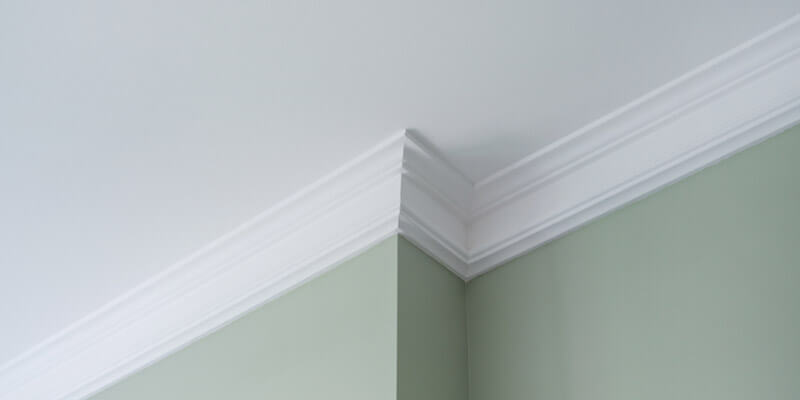Clear Caulk is most commonly used in bathrooms and kitchens surface. It is ideal for sealing tiles or any stoned area.
This caulk keeps appearing white during the first caulking process. This is because white caulk contains water and latex—the latex structure changes when the caulk becomes dry.
A user may ask himself why clear caulk turns white. This mainly happens with transparent latex caulks. A caulk, which is applied to a clean and dry surface, will change from white to transparent if everything is alright.
However, in case the caulk does not get enough time to dry completely, it may show a cloudy or white gesture.
Why Clear Caulk Turn White: Main Causes
Butyl Rubber, Acrylic Latex, and Silicone are the three basic forms of clear caulk. Mainly, caulk is a kind of sealant that is used to cover cracks or gaps around windows, doors, and pipes. In the presence of moisture, clear caulk can turn white.
Clear caulks usually look white when they first come out of the tube and become transparent after curing. A user should apply 100 % authentic, clear caulk to get better results. When you use the caulk, wait a couple of hours to get a transparent look.
But still, sometimes clear caulk turns white for many causes, such as:
Cause 1 – Moisture
If someone is caulking at such a surface that is not completely dry, moisture can be stuck between the caulk and the surface in this type of place. In addition, continuous water contact can prevent the caulk from drying and becoming transparent. This can mostly happen in bathrooms and kitchens.
- Humidity on the surface of the caulk could stop it from becoming transparent and keep it white.
- The continuous presence of moisture from a sink or bathtub may restrict your clear caulk turn into transparency.
Cause 2- Expired Clear Caulk
The caulk you are using may expire a long time ago, and you did not know. An expired caulk used to fail to become active on any surface. Even the surface is dry. So using an old caulk may provide the user a white color caulk gesture. And it stays white even after drying.
Mistakenly uses of an old clear caulk may demand removing and re-caulking. And not only clear caulk, but it is also applicable for silicone caulk too. Sometimes clear silicone looks cloudy, and this use of expired caulk can be the reason.
Cause 3- Poor Environment
Maybe your applying process of clear caulk is perfect. Still, the environment of the place is sloppy and poorly ventilated, and the room contains high temperatures. In this case, the applying caulk color can be changed or turned white.
Clear or White Caulk – Which One Is the Best
There is always a controversy running in a caulk user’s mind that I should use clear or white caulk. The simple logic is for white trimming, and white caulking is always preferable.
The reason for this is if there are holes between the molding and the wall, white caulking will cover them neatly. But, on the other hand, clear caulking will leave the gap apparent.
But white trimming is not always needed for everybody. Because clear caulk is most commonly found in kitchens and bathrooms, white trimming is useless in such a place.
Clear caulking makes a minimal gap between the surface and caulk that won’t conflict with surrounding tile, grout, or stone. Clear Caulk is always the best choice when someone does not have any intention to paint over the caulk.
There are a few more causes of using clear caulk, such as:
- In the bathrooms and kitchen, apply the clear caulk.
- Clear caulk is excellent for repairing fittings on tile or stone such as bathtubs, showers, or kitchens.
- Utilize clear caulk in areas where you do not intend to paint over the caulk.
- Using white caulk on seal baseboards, woodwork, and siding can make it last longer.
- Put white caulk where you plan to paint over the sealant.
However, clear caulk is the finest option for sealing baseboards, trim, and other areas that will be colored later. White Caulk is frequently used to give an acrylic paint texture.
Silicone Vs. Clear Caulk: Why They Turn White
The major difference between Caulk and Silicone is caulk is mainly used in the home area, such as any corner of the wall, but silicone is used in bath tiles and sink areas. On the other hand, caulk is paintable while silicone is not.
Queries About Clear Caulks
Silicone and clear caulk can both become white, but the causes can be different. Maybe someone can ask does clear silicone is dry clear, why silicone turns white or clear silicone is not clear.
The answer is clear silicone caulk such as latex dries clear after use. And when it dries completely, only the silicone is left on the caulk.
Moreover, it gives a transparent look at that moment. Because clear silicone dries almost transparently. However, an authentic, clear silicone caulk will always provide the same color. To get proper texture, a user should wait 72 hours.
On the other hand, if silicone turns white, the probable reason is that at the time of caulking, the water ions leave a powdery white coating on the silicone. That’s why it usually gives a white vibe. And you may think your clear silicon is not clear.
To ensure this, use Gorilla Clear Gorilla 100 % silicone sealant, ideal for kitchen, bathroom, windows, doors, vehicles, naval pipes, gutters, and other areas.
Applying Silicone Over Clear Caulk
Suppose someone plans to use silicone caulk over the clear caulk to make it clearer, then he should drop the idea. Because when anyone applies clear silicone caulk over white caulk, he will get a sloppy look with the white caulk.
Therefore, Silicone sealants stick nicely to any flat or hard surfaces such as tile, steel, or rock. But while applying silicone caulk over white caulk can be a cause of cracking.
When silicone caulk is applied over white caulk, mildew can colonize between the surfaces of the caulk. Even mildew-resistant caulk, such as Polyseamseal, can also form fungus if the caulk is used in this same manner. To avoid this, properly remove the existing caulk before sealing any joints.
Choosing DAP Clear Silicone Caulk
The DAP silicone sealant is suitable for both indoor and outdoor usage. It is appropriate with polyester, porcelain, latex, ceramic, and other substances, and it gives a strong, mildew-resistant sealant that does not crack over time.
So many users choose DAP rather than other clear Caulk. And may ask does dap clear caulk come out white? And the reality is all clear silicone caulk can turn white instead of transparent. To prevent this, allow the caulk to dry for at least seven- to fourteen days.
Moreover, a DAP caulking can become foggy if it gets wet before drying. And another issue could be the gap that the caulked gap was not totally dry before re-caulking. And the re-caulking process was applied too quickly.
Similarly, one more important thing that should keep in mind is that applying different variants of caulking can result in off-white color. So, apply anyone clear caulk on the surface in a proper manner.
FAQ
For baseboards, should I use clear or white caulk?
How long does clear caulk take to dry?
What causes the clear silicone to turn white?
Does clear caulk dry clear?
Wrapping Up!
Your concern about why clear caulk turns white is solved hopefully. Because now you know because of latex structure and surface condition, a clear caulk can turn white. In case you find our info useful, share it with others.
Want to Learn More:
- Is Landlord Responsible For Caulking (Assumption Or Fact)
- Should I Caulk Around Shower Escutcheon: If Yes Then How
- What Type Of Caulk For Crown Molding [5 Types Of Caulk Info]
- What Type Of Caulk To Use For Quartz Countertops?
- What Type Of Caulk To Use For Backsplash | Ultimate Guide
Hello! this is John Cox. If I’m not wrong, you love Home. Right? And you already met one of them who’ve been in this field since 2005 and still go on. According to my interest, I’ve started this blog to share my thoughts about Home sectors, and you’ll love it.


